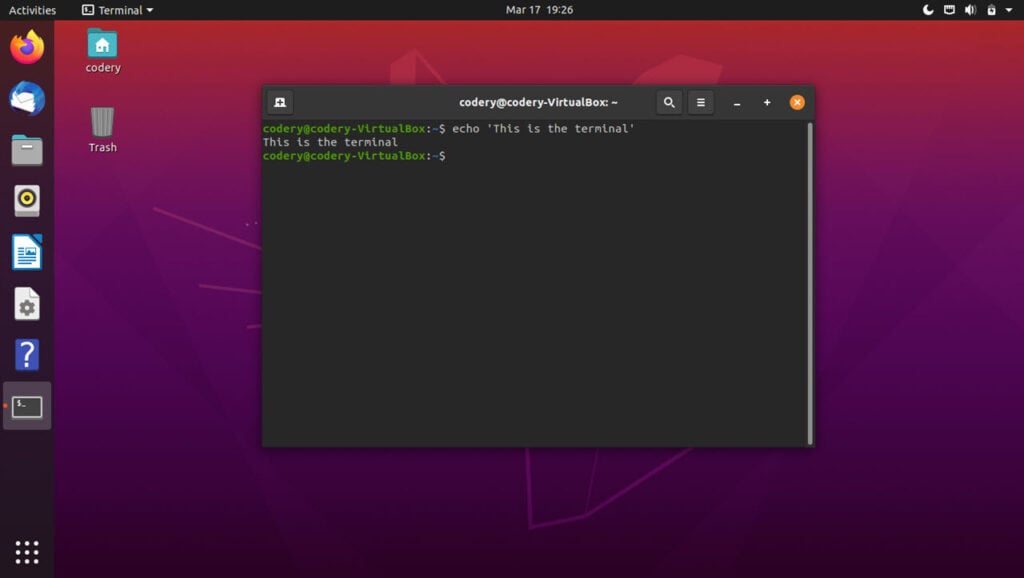Linux has been the rallying symbol of open-source software ever since its inception. The project follows guidelines that strictly revolve around all software that is free and open-source.
In addition to being super smooth, Linux doesn’t hog up system resources, unlike other rival operating systems that can cause performance issues on low configuration hardware.
All this has led to Linux being available in hundreds if not thousands of distributions. Each with its own specific set of bells and whistles. The two most popular Linux communities however are KDE and Gnome.
In this article, we’re going over both these distros, their pros and cons, how they match up against each other and which one should you pick.
Also read: 25 essential Linux Terminal commands
What is KDE?
KDE is one of the more popular Linux communities out there known for making some extremely aesthetically pleasing distros. KDE distros focus a lot on smaller details and often come with rather robust tools.
KDE often goes out of its way to get professionals to piece together its distros. This often results in the distros being modern-looking with catchy icons, smooth animations and with pretty much every application a user might need. KDE is also the default environment for multiple Linux distros such as Plasma, Neon and Kubuntu.
What is Gnome?
Gnome is a desktop environment similar to KDE, but it focusses more on producing distros that are quite stable, even on the worst hardware configurations you could use.
It’s more popular than KDE because of its popular distros such as Ubuntu, Fedora, Debian, CentOS and Red Hat. Gnome is known for its stable builds and easy to use to provide a large number of user-friendly tools.
Also read: Linux web hosting vs Windows web hosting: Which one to choose?
KDE vs Gnome
Here are a few key differences between the two environments.
Workflow
Gnome latest variation, Gnome 3, has completely revamped its workflow. Instead of bearing a more Windows-like resembles, the environment now uses the Gnome shell, which removes the launcher, menus and icons and instead uses an interface with a dock that only shows icons when you need them. This goes a long way in keeping your desktop clutter-free.

On the other hand, KDE takes a more conservative approach and focuses heavily on aesthetics, sometimes even at the cost of productivity. It is also highly customisable, meaning you can move panels, add or delete components and even lets users control the window borders—something you won’t find in Gnome.
Appearance
Aforementioned, KDE focuses more on aesthetics and hence is the more visually appealing of the two. Besides, if you don’t prefer the default look, you can always customise it down to your liking using the immense customisation it provides.
Much like Windows, in KDE, you can access all your files and programs using a single launcher. All these programs are kept neatly categorised and any specific program can be found in a breeze.

Gnome offers a subtle modern touch to its interface with docks holding important program shortcuts. You also get an entire list of all the programs installed on your machine by opening the program drawer. Just click on the bottom left of the screen and you’re good.
Programs
While both the desktop environments offer similar applications, there’s a significant difference in design. KDE applications generally tend to be a bit more feature-packed and robust than their Gnome counterparts.

That’s not to say that Gnome programs are bad. Most default programs would let users do or control just about anything they’d need to on their machine. If an application fails to satisfy your needs, you can always find a third-party package around the web and can install it in pretty much a single command.
Userbase
Both KDE and Gnome attract users based on their particular needs and workflows. Gnome however is the more popular of the two owing to Ubuntu’s huge popularity in the Linux community.

KDE is picking up pace as well, thanks to the large scale user dissatisfaction with Gnome 3. Many users are migrating to other distros, mainly KDE. It’s also a great place for beginners to get into Linux owning to its resemblance to Windows.
Also read: How to install Steam on Linux?
Pros and cons
| Parameters | KDE | Gnome |
|---|---|---|
| Workflow | Pros Highly customisable. — — Cons Aesthetics can hamper productivity. | Pros Clutter free desktop. Easier to reach/launch programs. — — Cons Not as customisable as KDE. |
| Appearance | Pros Focused around aesthetics. Better themes than Gnome. — — Cons Customisations can be overwhelming. | Pros App drawer makes it easier to find programs. — — Cons Not as good looking as KDE. |
| Programs | Pros Generally have more features than Gnome counterparts. — — Cons – | Pros Third-party packages easy to find and download. — — Cons Programs not as robust as KDE counterparts. |
| Userbase | Pros Steadily growing userbase. — — Cons Userbase not as big as Gnome. | Pros Better community support thanks to large userbase. — — Cons – |
Which one should you pick?
The answer here is more complicated than just Gnome or KDE. While both environments are fundamentally Linux, they have different approaches to the desktop environment and target different userbases.
KDE offers a rather good looking and easy to use interface while Gnome focusses on providing stable, bugless releases. Your choice is going to be largely dictated by your use case, your mastery over Linux and the system you’ll be using with the distro you’re planning.





